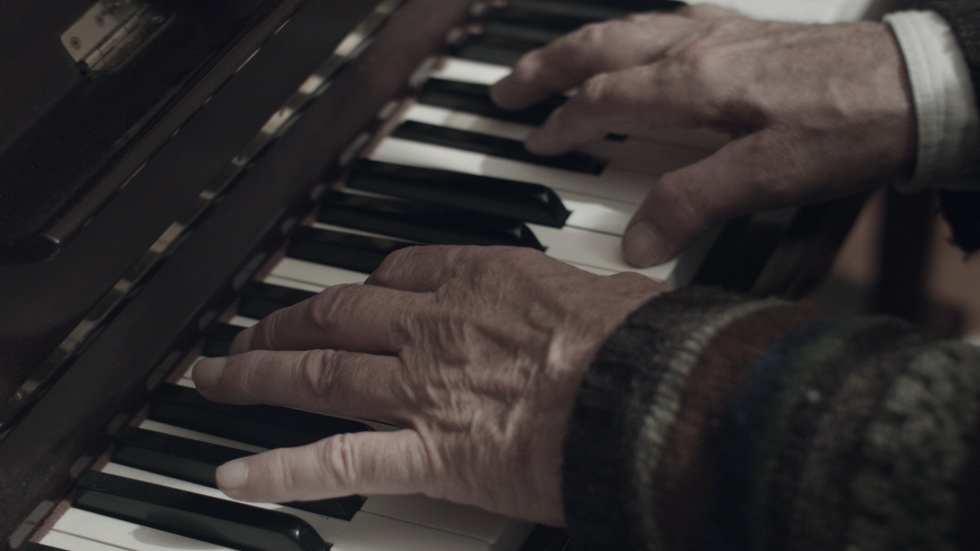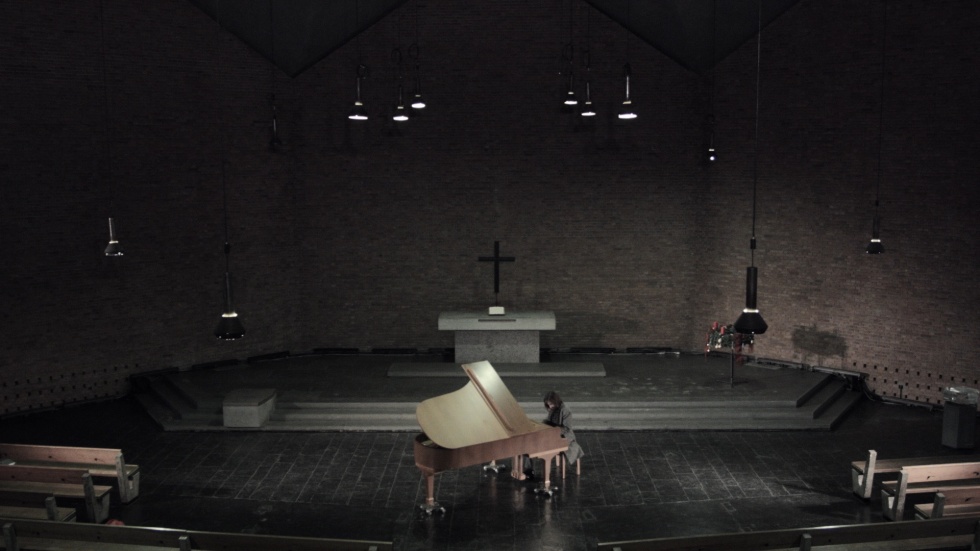Updated on 26 Jun 2015: In the five months since this feature first ran, the musical world described has continued to expand and proliferate. Several of the Erased Tapes artists mentioned are playing this year at the BBC Prom concert at the Albert Hall curated by Mary Anne Hobbs – and on the Boiler Room, we have been privileged to broadcast firstly one of the forefathers of this music, Terry Riley, and now one of our most ambitious concerts yet: Hauschka & Múm in collaboration with MDR Symphony Orchestra & Kristjan Järvi live from Leipzig. To celebrate this, we’ve updated this piece with a new Spotify playlist to serve as an introduction to this rich world.
—
Sometimes musical movements happen in a flash, inspired by one innovation. Very often they gestate slowly in a small scene, then burst out into the mainstream. But occasionally, they creep out of the woodwork from all directions so gradually that one day you wake up and realise that they’re all around you, and you’ve got no idea how this happened. So it is with the strange and wonderful interzone that exists where classical and orchestral music bleed into… well, into just about everything else right now. Whether you call it postclassical, neo-classical, indie-classical, classical crossover or NonClassical – all terms which have been chucked around, none quite seeming to capture the full range of what’s happening – this stuff is everywhere.
That includes Boiler Room. Some of our best-loved broadcasts of the past year have explored different corners of this zone. For Jonny Greenwood surrounded by the players of the LCO, and for Nils Frahm surrounded by his multiple keyboards and effects in the stunning surroundings of the Dimensions Festival launch, we had some of the most impassioned and deeply—involved feedback of any show we’ve ever done. Henrik Schwarz has been translating his own work as a club musician into classical forms. Volker Bertelmann aka Hauschka (the performance that launched our In Stereo sessions) and the duo of Ryuichi Sakamoto and Taylor Deupree both showed us the magic possibilities of technological manipulation of the piano: the former with lyrical melodies and the latter coaxing ambient textures of breathtaking delicacy from their setup. And now, as part of our Stay True series of documentaries and shows with Ballatine’s Scotch whisky, we’ve taken a snapshot of a number of related strands as they feed into today’s German musical underground.
The process of creating that documentary threw into relief the complexity of the relations between classical traditions and underground music. Each of those individual strands of influence was its own thing, yet they have operated together with other cultural currents to create the atmosphere of acceptance we have today: the sense that, as multi-disciplinary musician and BBC Radio 3 presenter Mara Carlyle puts it, “for a musician to display their classical training and influences isn’t seen as stuffy or show-offy any more, it’s actually quite a natural thing to do – it’s cool, even!” Where previously “classical crossover” suggested ostentation or a novelty act, or at best a leftfield curiosity, it’s now something that we simply accept as part of our listening palette, whether our entry point is indie rock, electronica, experimental and noise music or even straightforward dance.
“It wasn’t until the 2000s that the world of academies and concert halls really sprung a leak big time”
Of course the fact is that the influences were always there. There was a contingent of techno and electronic producers that knew from the start that their music had its roots in the mid-century European avant-garde of Karlheinz Stockhausen and Iannis Xenakis, as much as in nightclubs, even if it came indirectly via Kraftwerk – or, as our documentary showed, via Roedelius and Cluster. There was a natural connection with American orchestral minimalism, too: Aphex Twin had a track reworked by Philip Glass right at the very start of his career, and The Orb sampled Steve Reich at the start of theirs. And going further back, acts like Kronos Quartet and Penguin Cafe orchestra had occupied their own very specific corners of the music world. But these were exceptions or fringe activities – it wasn’t until the 2000s that the world of academies and concert halls really sprung a leak big time and the cross-fertilisation began.
In 2004, the Ether festival on the South Bank brought Squarepusher, Jamie Lidell and Mira Calix together with the London Sinfonietta and it felt like a natural, albeit unusual thing to do. At the same time, the NonClassical clubnight and label founded by Gabriel Prokofiev in 2003 – grandson of legendary 20th century Russian composer Sergei – was making waves in smaller east London venues. Other experimental labels like Boston-based Type Records were putting out orchestral music as an extension of ambient/drone music. Major acts like Björk, The Arcade Fire and post-Kid A Radiohead were experimenting with compositional rigour and unconventional instrumentation without it seeming like affectation. Again, each of these was its own thing, but increasingly it was becoming normalised.

s t a r g a z e with Julia Holter in Berlin
But it was only as the decade drew to a close that it became more commonplace for this kind of music to emerge through more conventional channels. The classical world itself started welcoming in the collaborations when the venerable Deutsche Grammophon label launched its ReComposed series in 2006, which would let the likes of Matthew Herbert, Jimi Tenor and Max Richter loose on its catalogue – and indie/dance/alternative labels started reciprocating. In fact, Sam Mackay of the London Contemporary Music Festival, pinpoints it to one label in particular. “I think FatCat caught onto something important in the mid 00s,” he says; “when they started releasing Max Richter records. They were able to take a lot of knowledge and experience from the indie label world, and actually draw artists like him into that scene in a way that I don’t think had really been achieved before. A label like Erased Tapes can be seen in that context too, I think.”
Erased Tapes is the perfect example of a label that has come into being in the new climate. Where FatCat were an established indie/electronica label turning their hand to releasing post-classical composition (later launching a classical-oriented subdivision, 130701), Erased Tapes began in 2007 with acts like Nils Frahm, Olafur Arnalds and Peter Broderick as a vital part of their portfolio alongside electronica and other sounds. Founder Robert Raths says “it was just following music we wanted to hear – perhaps a little bit in reaction to so much in popular culture being super-loud, super-limited production for instant impact, and wanting something that is longer, that might have someone playing just one instrument, or on quiet instruments, that needs you to listen more.”
“Alright! There’s an audience that believes in this too!”
“But we reached a tipping point around 2012,” Raths continues, “when we booked a label tour. I had no idea if it could work, I didn’t know if there was an audience that believed in it. And people came – the whole tour was sold out, even in places I’ve never been to like Budapest or Istanbul, a thousand people came and gathered to watch Nils and Olafur and A Winged Victory For The Sullen perform together. That was the time I though ‘Alright! There’s an audience that believes in this too’ – and from there on it multiplied, the London shows would double in size each time, and now Nils sold out the Roundhouse in just a few weeks. It’s mad.”
But maybe not so mad. Though, as Raths says, there’s a readjustment that needs to be made from the modern noise-scape, perhaps even a readjustment of attention span, the rewards are great, and perhaps there are easy ways for us to get into that headspace. “It’s largely very accessible music isn’t it?” muses Mackay. “It’s also benefited from a close relationship with cinema – things like Waltz with Bashir and There Will Be Blood obviously brought Max Richter’s and Jonny Greenwood’s music to new audiences. In fact, the music put out by Erased Tapes and 13071 in general feels very cinematic, in the sense that the listener can project all kind of scenes on to it. I think that’s as true of Nils Frahm or Max Richter as of Jóhann Jóhannsson or whoever.”
That doesn’t mean that the music has to be cinematic or soundtracky to succeed, though – far from it. The London Contemporary Music Festival itself has taken place in the areas you’d be more likely to associate with a gritty warehouse rave, and as well as immersive pieces – performances of Brian Eno’s ambient music for example – included fearsome guitar drones, dizzying tape collage and highly jagged, discordant ensemble pieces. Yet the unlikely surrounds, and what Mackay calls “quite a heterogeneous audience in terms of tastes”, lead to a surprising degree of close listening without it ever sinking into the over-reverent, furrowed-brow poses that can be associated with obviously avant-garde sound.
The crossover to and from other musical scenes, says Mackay, “helps, in that it can in turn generate new audiences for music that isn’t often presented outside academic or other highly institutional contexts – say, the concert hall. New audiences encourage the movement of that music beyond the academic context, which of course is helpful in that more people discover it and among those are artists who get influenced by it or even choose to pursue it academically.” He does, though, sound a warning about “certain types of music starting to be valued more superficially” if they’re heard without any context, and urges interested audiences to dig deeper and read about what they hear if they like it.
“It’s never been easier for audience to dig deeper”
He’s right: that is the danger. Crossover and cross-fertilisation are valuable for any music right up to the point that it loses its roots and dissolves its identity. And there’s a fine line between finely wrought cinematic orchestrations and witless That’s What I Call Orchestral Chillout murmurings. The fact is, though, it’s never been easier for audience to dig deeper, and discover a network that presents heterogeneous music for a heterogeneous crowd, without compromising its integrity or making it into easy-listening.
Festivals like Unsound and LCMF, spots like London’s Cafe OTO, information sources like The Wire, [ahem] Boiler Room, and Radio 3’s Late Junction show which Mara Carlyle presents along with Max Reinhardt, Fiona Talkington and Nick Luscombe. As Carlyle says, the culture of stepping outside classical music’s boundaries “isn’t new: people like Gabriel Prokofiev, or Jonny Greenwood, or Richard Reed Parry from Arcade Fire, have been doing it for years, kind of unnoticed. But now, the climate is ripe, really ripe for contemporary classical music. It doesn’t have the same hang-ups, there isn’t the same stigma. Exciting times!”
– – – – – – –
To watch all recordings from our Stay True Germany session— featuring Carl Craig, Francesco Tristano, Brandt Brauer Frick and Gregor Schwellenbach— head over here.

